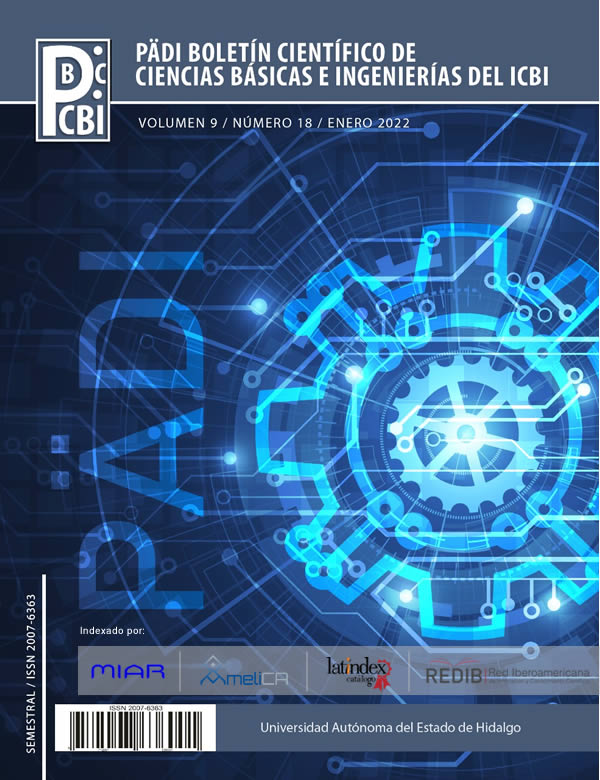How mathematical models help to understand and combat COVID-19
Abstract
At the present, due to COVID-19, it is common to hear about curves and dynamics of contagion, hospitalization, recovery and death, as well as predictions and / or projections of these curves / dynamics in the future in the short and medium term. However, except for those people immersed in the subject, the understanding of all the jargon used to describe this behavior is scarce, especially when talking about the use of mathematical models to support what has been said. In this research work, a brief description of the mathematical models most used to describe the behavior and impact of the infectious disease called COVID-19 is presented, in addition to explain the use of these models to help combat this pandemic. To illustrate the effectiveness of these models, simulations of some mathematical models are presented and compared with data reported by the WHO. As a contribution by the authors, an unpublished SIR-type mathematical model is proposed that contemplates incubation, recovery and loss of immunity dead times.
Downloads
References
Angulo, M. T., Castaños, F., Moreno-Morton, R., Velasco-Hernández, J. X., & Moreno, J. A. (2021). A simple criterion to design optimal non-pharmaceutical interventions for mitigating epidemic outbreaks. Journal of the Royal Society Interface, 18(178), 20200803.
Arango-Londoño, D., Ortega-Lenis, D., Muñoz, E., Cuartas, D. E., Caicedo, D., Mena, J. & Mendez, F. (2020). Predicciones de un modelo SEIR para casos de COVID-19 en Cali, Colombia. Revista De Salud Pública, 22(2):1-6.
Banco Mundial. (2020). La COVID-19 (coronavirus) hunde a la economía mundial en la peor recesión desde la Segunda Guerra Mundial. https://www.bancomundial.org/es/news/press-release/2020/06/08/covid-19-to-plunge-global-economy-into-worst-recession-since-world-war-ii. [Web; accedido el 06-07-2021].
Castaños, F., & Mondié, S. (2021). Observer‐based predictor for a susceptible‐infectious‐recovered model with delays: An optimal‐control case study. International Journal of Robust and Nonlinear Control, 31(11):5118-5133.
CONACYT. (2021). Modelo AMMA. https://www.coronavirus.conacyt.mx/proyectos/ama.html. [Web; accedido el 08-08-2021].
Cumsille, P., Rojas-Díaz, ́Ó., de Espanés, P. M., and Verdugo-Hernández, P. (2021). Forecasting COVID-19 Chile ‘second outbreak by a generalized SIR model with constant time delays and a fitted positivity rate. Mathematics and Computers in Simulation.
David, A., Criado, R., and Romance, M. (2020). Predicción de la evolución de la epidemia de COVID-19 usando un modelo SEIR. https://www.dcncsciences.com/wp-content/uploads/2020/04/Informe02-1.pdf.
Etxeberria-Etxaniz, M., Alonso-Quesada, S., and De la Sen, M. (2020). On an SEIR epidemic model with vaccination of newborns and periodic impulsive vaccination with eventual on-line adapted vaccination strategies to the varying levels of the susceptible subpopulation. Applied Sciences, 10(22):8296.
Fresnadillo, M, M, José., García, S, Enrique., García, S, José. (2013). Modelización matemática de la propagación de enfermedades infecciosas: de dónde venimos y hacia dónde vamos, 26(2):81-91.
García Piñera, A. (2014). Modelos de ecuaciones diferenciales para la propagación de enfermedades infecciosas.
Ghosh, P., Ghosh, R., and Chakraborty, B. (2020). COVID-19 in India: Statewise analysis and prediction. JMIR public health and surveillance, 6(3):e20341.
Hartemink, N., Randolph, S., Davis, S., and Heesterbeek, J. (2008). The basic reproduction number for complex disease systems: Defining R0 for tickborne infections. The American Naturalist, 171(6):743–754.
Huamán-Saavedra, J. J. (2020). La pandemia del COVID-19. Revista Médica de Trujillo, 15(2).
Kermack, W. O. and McKendrick, A. G. (1927). A contribution to the mathematical theory of epidemics. Proceedings of the Royal Society of London. Series A, 115(772):700–721.
Kribs-Zaleta, C. M. and Velasco-Hernández, J. X. (2000). A simple vaccination model with multiple endemic states. Mathematical biosciences, 164(2):183–201.
Montesinos-López, O. A. and Hernández-Suárez, C. M. (2007). Modelos matemáticos para enfermedades infecciosas. Salud pública de México, 49(3):218–226.
Naresh, R., Tripathi, A., Tchuenche, J. M., & Sharma, D. (2009). Stability analysis of a time delayed SIR epidemic model with nonlinear incidence rate. Computers & Mathematics with Applications, 58(2):348-359.
Rosselli, D. (2020). Epidemiología de las pandemias. Medicina (Bogotá), 42(2):168-174.
Shan, C., & Zhu, H. (2014). Bifurcations and complex dynamics of an SIR model with the impact of the number of hospital beds. Journal of Differential Equations, 257(5):1662-1688.
UNESCO (2020). COVID-19: Problemas sociales y psicológicos en la pandemia. https://es.unesco.org/news/covid-19-problemas-sociales-y-psicologicos-pandemia. [Web; accedido el 06-07-2021].
Unmubig, B. (2020). Las consecuencias de la pandemia del coronavirus y lo que se debería hacer. https://mx.boell.org/es/2020/09/22/las-consecuencias-de-la-pandemia-del-coronavirus-y-lo-que-se-deberia-hacer. [Web; accedido el 06-07-2021].
Vega, A. (2020). Hospitales colapsarán en enero si los contagios de COVID no bajan en diciembre, alertan médicos. https://www.animalpolitico.com/2020/12/hospitales-colapsaran-enero-si-contagios-covid-no-bajan/. [Web; accedido el 06-07-2021].
Volpert, V., Banerjee, M., and Petrovskii, S. (2020). On a quarantine model of coronavirus infection and data analysis. Mathematical Modelling of Natural Phenomena, 15(24)1-6.
Vytla, V., Ramakuri, S. K., Peddi, A., Srinivas, K. K., & Ragav, N. N. (2021, February). Mathematical models for predicting COVID-19 pandemic: a review. In Journal of Physics: Conference Series (Vol. 1797, No. 1, p. 012009). IOP Publishing.
Wang, W., & Zhao, X. Q. (2012). Basic reproduction numbers for reaction-diffusion epidemic models. SIAM Journal on Applied Dynamical Systems, 11(4), 1652-1673.
WHO (2021). WHO Coronavirus (COVID-19) Dashboard. https://covid19.who.int/table. [Web; accedido el 06-07-2021].













